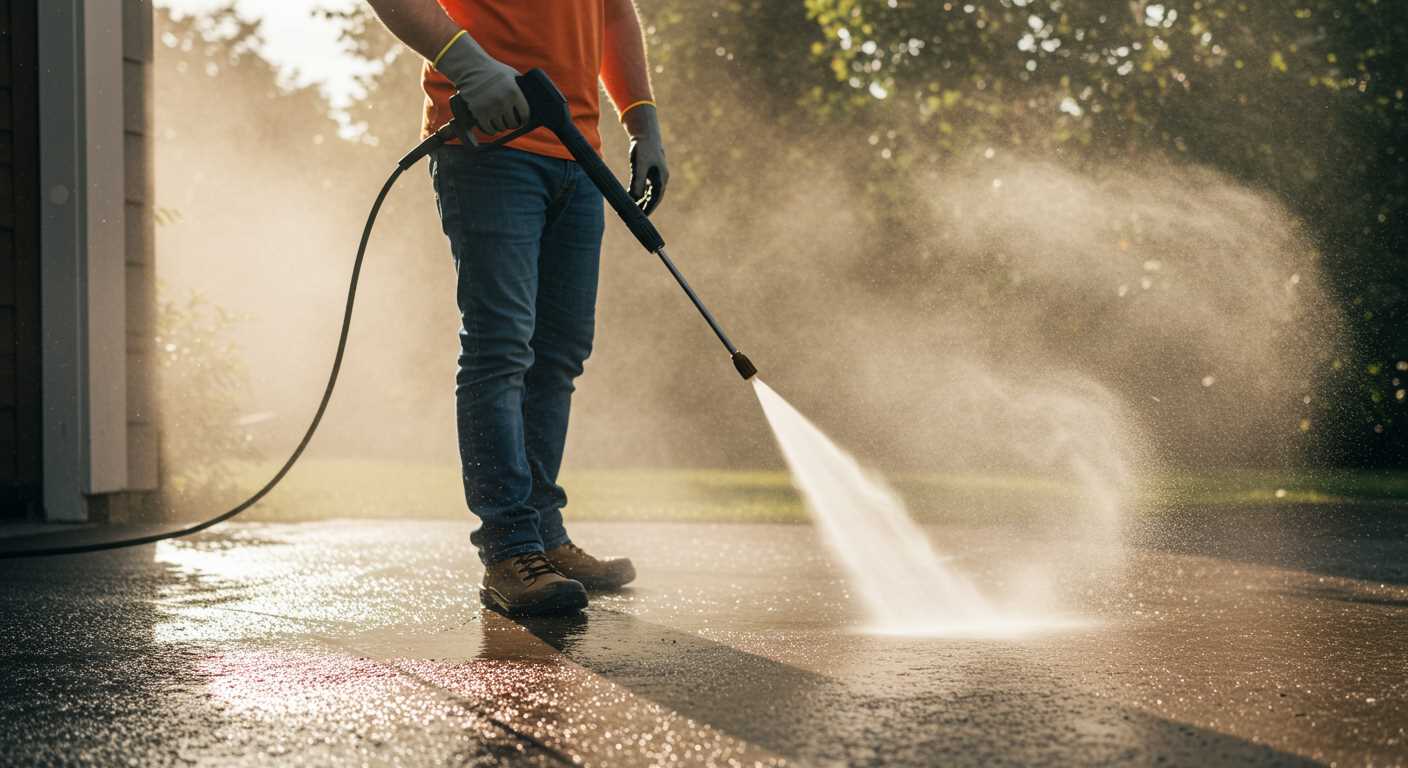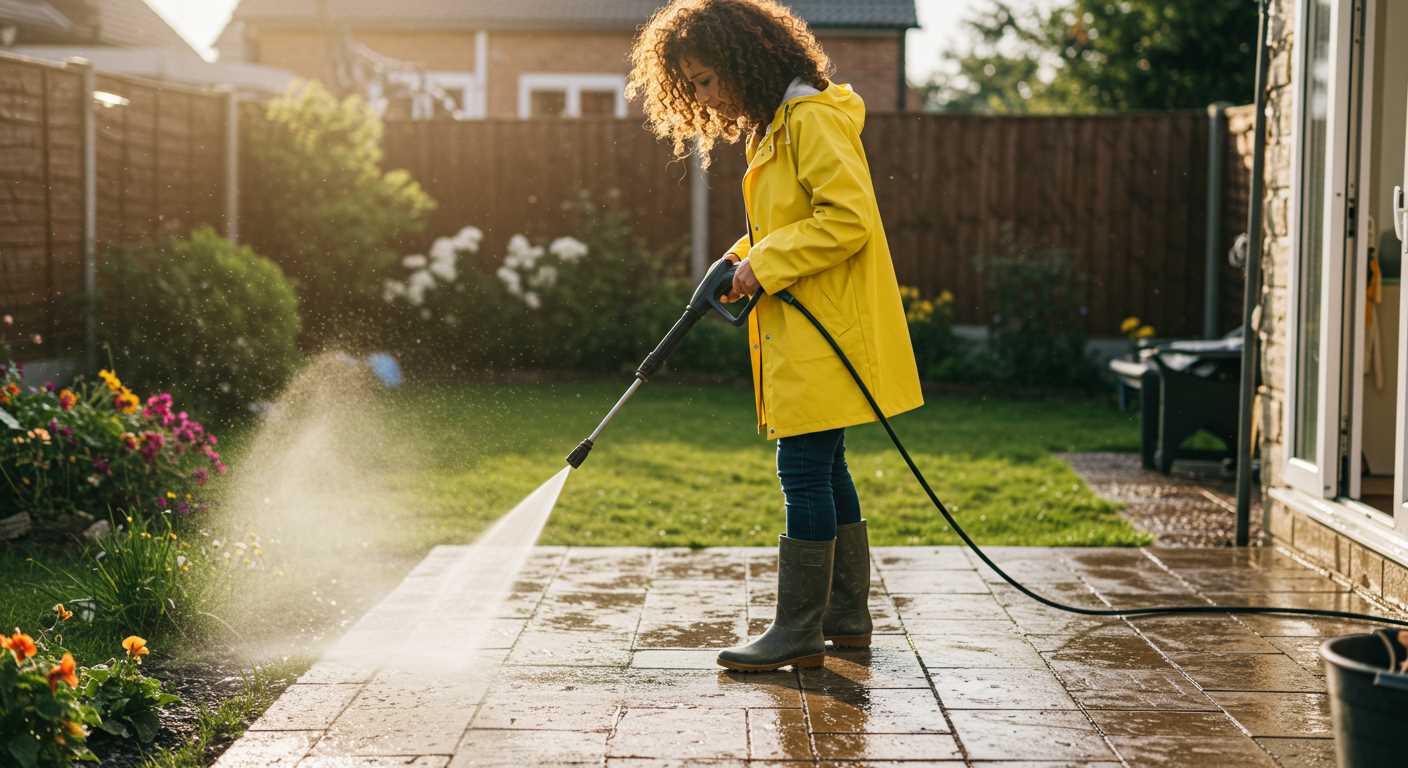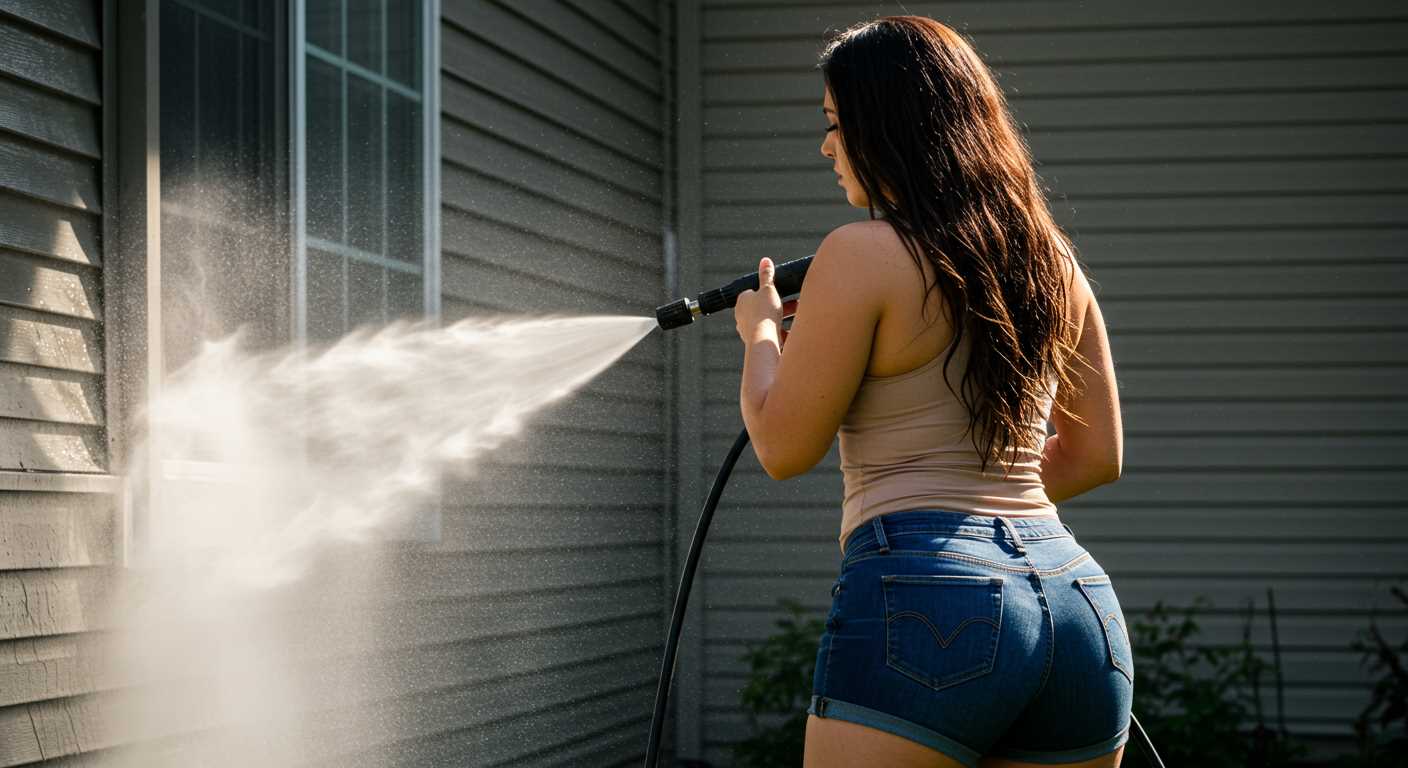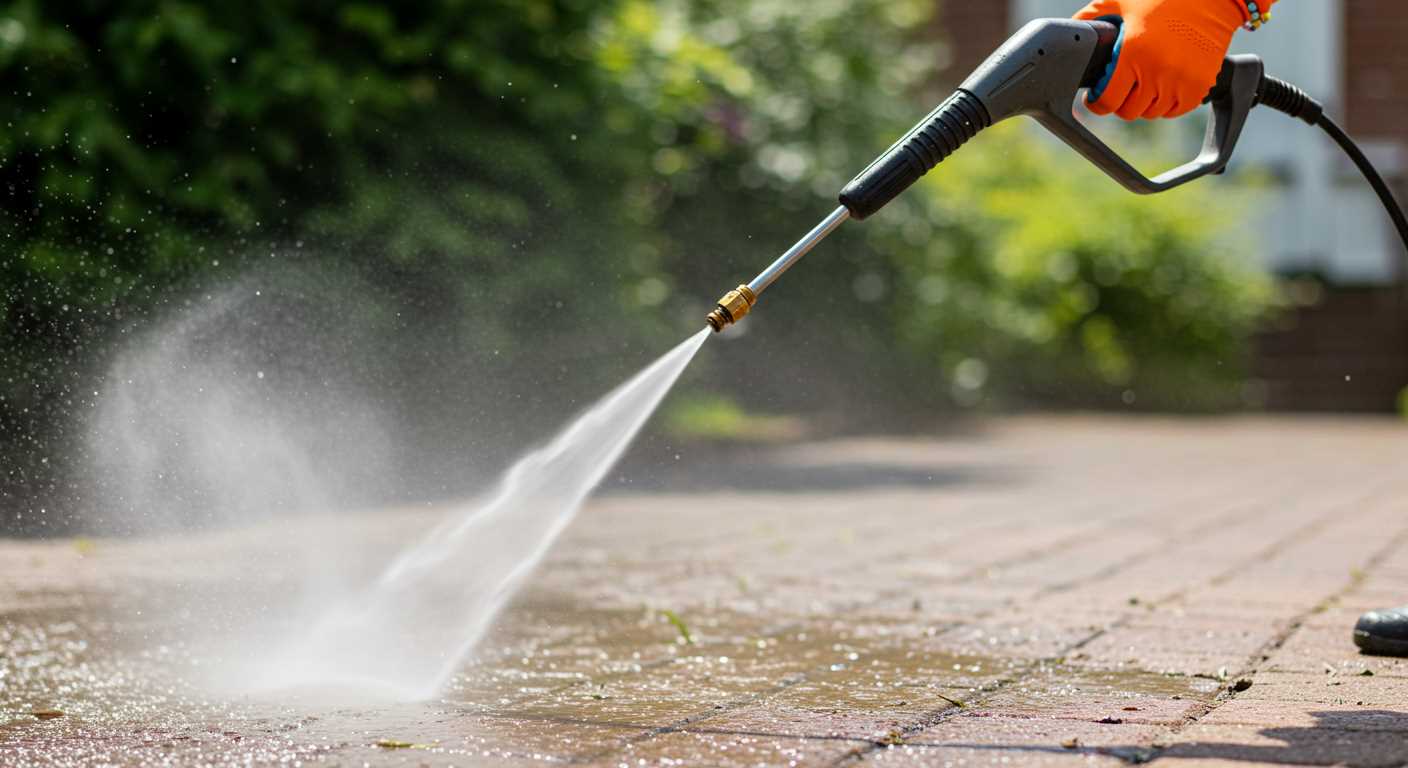



To regain the original appeal of your outdoor surface, utilise a gas-powered sprayer with a pressure rating of at least 3000 PSI. This level of strength effectively tackles stubborn stains, grease, and grime that accumulate over time.
Utilise a rotary nozzle attachment for comprehensive coverage and enhanced cleaning power. This accessory spins water in a circular motion, which significantly increases the impact on tough blemishes while reducing cleaning time. It’s advisable to keep the nozzle approximately 12 inches from the surface to avoid damage.
Prior to the cleaning process, pre-treat particularly tough stains with a suitable solution designed for tough spots. Allow it to sit for 10-15 minutes to penetrate deep into the stains before washing. After applying the cleaner, working in sections can lead to better results, as it allows you to manage the distribution of cleaning solutions and water more effectively.
Optimal Technique for Driveway Restoration
Commence the process by selecting the correct nozzle size, ideally 25-degree, to maximise the force of the stream while ensuring safety for the surface. Ensure that your equipment can generate a minimum of 3000 PSI for effective removal of stubborn debris.
Preparation Steps
Before applying the jet, remove loose items, plant pots, and furniture from the area. Use a broom or blower to eliminate dust and leaves. Subsequent to this, apply a suitable cleaning agent specifically designed for hard surfaces, allowing it to sit for approximately 10-15 minutes. This pre-treatment assists significantly in loosening ingrained dirt.
Execution
Following the preparation, attach the nozzle and begin spraying at a distance of 12-18 inches from the surface. Maintain a steady, overlapping motion to cover the entire area uniformly. Avoid lingering too long in one spot to prevent etching the surface. For light stains, a sweeping side-to-side pattern is effective, while tougher areas might require a focused circular motion.
| Step | Detail |
|---|---|
| Nozzle Selection | Use a 25-degree nozzle for optimal performance. |
| Initial Cleanup | Remove debris and loose materials; apply cleaner. |
| Pressure Application | Maintain a distance of 12-18 inches while spraying. |
| Stain Removal Technique | Sweep in overlapping motions; focus on tough spots. |
Complete the task by rinsing the area thoroughly to remove any residue from the cleaning agent. Allow the surface to dry completely before placing any items or vehicles back to ensure a refreshed appearance.
Choosing the Right Pressure Washer for Your Driveway

For optimal results, select a unit with a minimum pressure rating of 3000 PSI. This level ensures effective removal of dirt and stains.
Understand the power source: electric models are quieter and easier to maintain, while gas-powered options offer more mobility and higher pressure. Choose based on your preferences and the size of the area needing attention.
Evaluate flow rate, measured in litres per minute (LPM). A higher flow rate enhances the efficiency of your operation, aiding in rinsing away the loosened grime effectively.
Look for adjustable nozzles that let you switch between different spray patterns. A wider fan spray is useful for larger areas, while a concentrated jet is ideal for stubborn marks.
Consider the weight and portability of the model. A lightweight option can be easily manoeuvred, helping you to reach all corners of your space without hassle.
Check for additional features such as detergent tanks, which can simplify the cleaning process by allowing the application of soap during operation.
Lastly, read reviews and gather insights on reliability and longevity. Brands with good customer feedback often indicate superior performance and durability in their products.
Preparing the Driveway Before Pressure Washing
Remove any loose debris, such as leaves, dirt, and stones, to facilitate effective cleaning. A broom or a leaf blower works best for this task.
Check for any oil stains or tough spots. For those, apply a degreaser in advance, following the manufacturer’s instructions. Allow it to dwell for the recommended time to break down the grime.
Ensure that there are no cracks or major damage on the surface. If present, consider repairing these areas to prevent further deterioration during the washing process.
Protect Adjacent Areas
Cover plants and grass near the area to avoid potential harm from water and chemicals. Use tarps or plastic sheets to shield them effectively.
Take precautions for any outdoor furniture or equipment. Move them away from the washing area to prevent accidental damage or water exposure.
Gather Necessary Equipment

Before starting, assemble all required tools, including the washing unit, hose, extension wand, and attachments. Ensure the nozzle is suitable for the intended cleaning task.
Have a hose or bucket ready for rinsing any residues after power washing. This step will help prevent streaking and ensure a thorough finish.
Selecting the Appropriate Cleaning Solution
For optimal results, I recommend using a dedicated cleaner specifically formulated for hard surfaces. Seek out solutions that feature degreasers to tackle oil stains and heavy grime effectively. Look for products containing sodium hypochlorite or potassium hydroxide, as they can break down tough contaminants. If the area is particularly stained, consider a solution with oxygen bleach, which helps lift discolouration without damaging the substrate.
Always adhere to the manufacturer’s guidelines for dilution rates. Too strong a mixture can lead to etching or discolouration. It’s advisable to test the solution in a small, inconspicuous spot first to evaluate its effects. For environmental safety, opt for biodegradable options whenever possible; these are less harmful to surrounding plants and ecosystems.
In situations where mould or mildew is present, selecting a cleaner with fungicidal properties can enhance the outcome. Do not mix different chemical products, as this can result in dangerous reactions. Use a pH-neutral product for regular maintenance to prevent damaging the surface over time.
For a DIY approach, a mixture of white vinegar and baking soda can be effective on lighter stains. Remember to rinse thoroughly after any application to remove residue and prevent slipping hazards.
Technique for Pressure Washing Concrete Safely

Utilise a 45-degree angle while directing the nozzle to avoid potential damage to the surface. This position evenly disperses the water pressure, ensuring thorough penetration into grime without risking chipping or pitting.
Maintain a distance of approximately 12 to 18 inches from the surface. Adjusting your distance is crucial; too close, and you risk creating gouges, too far, and the results become less effective.
Start at one end and systematically work towards the opposite end, applying an overlapping motion. This method guarantees consistent coverage and prevents leaving streaks. Apply maximum pressure in areas with significant build-up, but reduce it in more delicate spots.
Utilise broad, sweeping motions instead of concentrated blasts. This technique allows for a more controlled approach, minimising the risk of uneven finishes.
Periodically assess the area as you proceed. Should you notice any sections that require more attention, adjust your technique accordingly. It’s crucial to respond to varying levels of surface conditions.
After completing the task, rinse thoroughly with plain water to remove any residual cleaning agents. This step is essential to prevent potential streaking or discolouration.
- Maintain a steady stance to ensure control.
- Use common sense regarding wind direction; avoid spraying into wind to prevent back-splash.
- Wear appropriate safety gear, including goggles and sturdy footwear.
Employing these techniques will facilitate a safe and effective cleansing process, prolonging the life of your surface while enhancing its appearance.
Post-Cleaning Maintenance Tips for Concrete Driveways
Seal your surface annually to protect against stains and prevent water infiltration. Choose a high-quality acrylic or epoxy sealant to enhance durability and appearance. Apply after a thorough cleaning and ensure the surface is fully dry.
Routine Checks and Repairs

Inspect frequently for cracks or wear. Fill small cracks with a suitable concrete filler to prevent water damage and further deterioration. For larger issues, consider professional repair services to ensure longevity.
Regular Debris Removal
Remove leaves, dirt, and other debris regularly to maintain appearance and function. Use a broom or leaf blower, avoiding metal tools that can scratch the surface. This simple task promotes drainage and prevents mould growth.
Common Mistakes to Avoid While Pressure Washing
Choosing too high a pressure setting leads to potential surface damage. Always opt for the lowest effective psi (pounds per square inch) to avoid etching or chipping surfaces. This approach preserves integrity while ensuring efficient removal of stubborn grime.
Neglecting adequate cleaning solutions is another blunder. Many assume water alone suffices, but incorporating a suitable detergent significantly enhances results. Select a product designed for your specific surface type, ensuring it tackles oils and stains effectively.
Failing to maintain a consistent distance from the surface is a common oversight. Keeping the nozzle too close may result in uneven cleaning and surface harm. A distance of approximately 12 inches typically balances power and safety.
Skipping the pre-rinse phase is a frequent error. Removing loose debris or dirt beforehand prepares the area for thorough washing and maximises the effectiveness of your approach, preventing mud from splattering during the process.
Many underestimate the importance of protective gear. Gloves, goggles, and suitable footwear safeguard against potential hazards such as flying debris and chemical exposure, ensuring a safer experience.
Impatience can lead to missed spots. It’s crucial to work methodically, focusing on sections instead of rushing through. This ensures thorough coverage and eliminates the need for repetitive passes.
Ignoring the weather conditions proves detrimental. Windy or rainy days can affect visibility and cleaning efficiency, while extreme temperatures may cause cleaning solutions to dry too quickly. Always consider conditions before starting the task to optimise results.
Lastly, not performing regular maintenance on your equipment is a significant misstep. Regular checks on hoses, connectors, and the nozzle help prevent breakdowns, ensuring you’re equipped for the task at hand.








